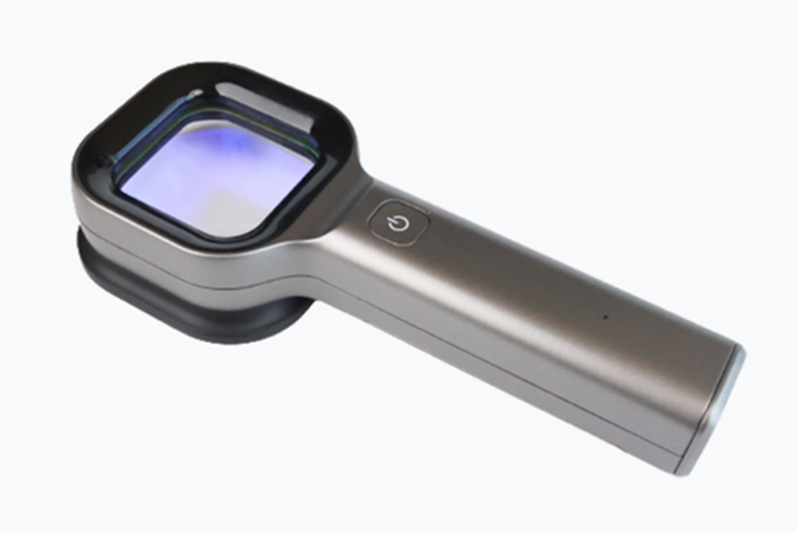In the field of dermatology, accurate and timely diagnosis of skin diseases is crucial for effective treatment. One valuable tool that has been widely used in this area is the Wood's lamp. This article explores the application of Wood's lamp in the detection and diagnosis of various skin conditions.
1. Understanding the Wood's Lamp:
The Wood's lamp, also known as a black light, is a handheld device that emits ultraviolet (UV) light. It operates at a specific wavelength that allows it to reveal certain skin abnormalities that may not be visible under normal lighting conditions. The lamp emits a deep blue or purple light, which helps to highlight specific pigments and substances on the skin.
2. Detection of Fungal Infections:
Wood's lamp is highly effective in detecting fungal infections on the skin, such as ringworm (tinea corporis) and fungal infections of the scalp (tinea capitis). The lamp's UV light causes certain fungi to fluoresce, making it easier for dermatologists to identify the affected areas. This aids in accurate diagnosis and appropriate treatment planning.
3.Identification of Bacterial Infections:
Certain bacterial infections, such as erythrasma, can be detected using a Wood's lamp. Erythrasma is caused by a bacteria called Corynebacterium minutissimum, which produces a distinctive coral-red fluorescence under the lamp. This enables dermatologists to differentiate it from other skin conditions with similar symptoms and prescribe the appropriate antibiotics.
3. Detection of Vitiligo:
Wood's lamp is also useful in diagnosing vitiligo, a pigmentation disorder characterized by the loss of melanin in certain areas of the skin. Under the lamp, the affected areas appear white due to the lack of fluorescence, while the unaffected skin emits a pale blue or green fluorescence. This aids in determining the extent and distribution of the condition, assisting in treatment planning.
4. Examination of Skin Pigmentation Disorders:
Wood's lamp can assist in the evaluation of various pigmentation disorders, including melasma and post-inflammatory hyperpigmentation. The lamp helps dermatologists visualize the extent and depth of pigmentation, guiding them in selecting appropriate treatment options such as topical creams, laser therapy, or chemical peels.
The application of Wood's lamp in the field of skin disease detection has proven to be invaluable. Its ability to highlight specific pigments and substances on the skin aids dermatologists in accurate diagnosis and treatment planning for various conditions, including fungal and bacterial infections, vitiligo, and pigmentation disorders. As technology continues to advance, the Wood's lamp remains a reliable and essential tool in the dermatologist's arsenal for providing effective care to patients with skin diseases
